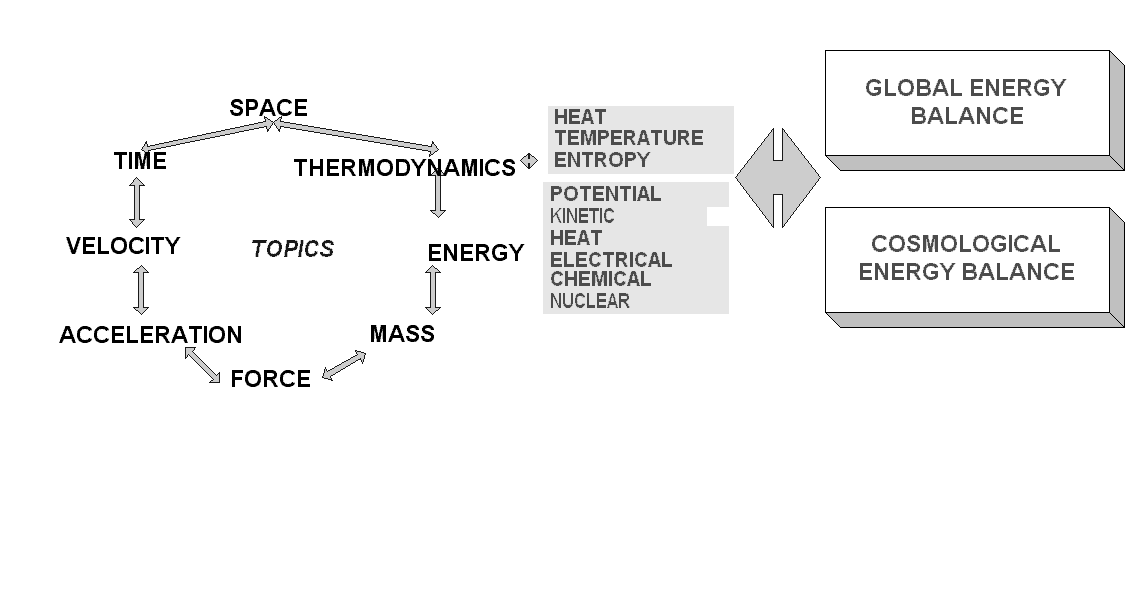
Chapters from the textbook:
$Introduction, motion, force,
energy - Chapters 1 - 7
$Structure of matter -
Chapter 11
$Thermodynamics - Chapters 13
- 15
$Astrophysics and cosmology -
Chapters 32-33.
FORMULAS
Motion:
v - Velocity
a - Acceleration
t - Time
Newton's Laws:

Weight = mg
Circular Motion

Law of Universal Gravitation:

Power =
work/time = energy
transformed/time
Energy:
2nd. Law - Alternative difinitions:
-Heat flows spontaneously
from a hot object to a cold object-
- No device is possible
whose sole effect is to transform a given amount of heat completely into work.-
- Natural processes tend to
proceed toward a state of greater disorder-
Entropy - measure of disorder @ Number of ways that energy
can partition.
Work » Heat » Energy---4180 Joule = 1 Cal
= 1 Kcal.
Temperature - Measure of internal energy.
Temperature
Scales: °F = 32 + (9/5)°C
°K = 273 + °C
Heating an
Object: Q = mc(T - T0)
(m - mass, c - specific
heat, T - final temperature, T0 - initial temperature)
Maximum Efficiency of Heat Engine = (Work output/
Heat input) = 1 - Tc/TH
(Tc - Temperature
(Kelvin ) of cold reservoir, TH - that of hot reservoir)
Ideal Gas
Law: PV = NkT
(P - pressure, V - volume, N
- No. of molecules, T - Absolute (Kelvin) Temperature, k - Boltzmann Constant =
1.38x10-23 Joule/°K)
Earth and Cosmological Energy Balance

Speed of light – c=3x108
m/sec.
f = 1/T frequency ; c= f 8
The
Electromagnetic Spectrum:

Stefan
Boltzman Law:
Pe – total emitted power in watts.
Wien
Law:
8max
= 2.9x10-3/T.
8max in meters – wavelength of the maximum of the spectral distribution.
Hubble’s
Law:
V =
Hd
H – Hubble’s constant = 15km/sec per million
light year of distance.
Issues to discuss:
· The greenhouse effect
· Earth’s energy balance
· The cosmological energy
balance – The microwaves background radiation as a probe of the beginning of
the universe.
